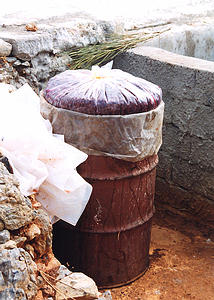| Tsipouro... Enjoying eating out in Crete is easy. Taverna's almost invariably serve good food. They also almost invariably attempt to give you a warm welcome; a final drink; or maybe both.... When the 'garcon' arrives beaming with that small decanter of clear liquid or simply tiny glasses already filled - you are about to enjoy a Tsipouro! A Rakis! A Tsikouthia! A celebration of the grape. An ancient Greek firewater. If you haven't had it before you may be in for a surprise. Whether the surprise is good or bad depends on many things. The Greek music in the background; good company; a little laughter; maybe a little Greek dancing or maybe just the smiling waiter. Whether it arrives before you meal, after it or... Or both! Whatever, try to enjoy a warm experience. |
